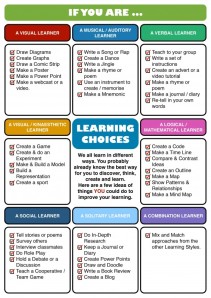Melanie Tait (2008) suggests that displaying capabilities in demonstrating social competence, taking advantage of opportunities to develop personal efficacy, using problem-solving strategies, having the ability to rebound after a difficult experience, learning from experiences and setting goals for the future (reflection – Katterns house of learning [BTI, 2013]), taking care of oneself and maintaining a sense of optimism all contribute to developing beginning teacher resilience.
As I came of my final practicum, and before revising readings on teacher resilience, the following ideas were at the forefront of my mind, and I still believe are extremely beneficial tips for the beginning teacher.
- Not to sweat the small stuff. You are tasked with many, and many varied jobs throughout the course of a single term, single week, single day, and even single lesson. You have anywhere from twenty-five unique individuals with unique needs bequeathing your attention in each of your classes across anywhere from a five spell day. Beginning teaches need to learn to reflect on their practices, fine-tune planning processes and continually seek professional development and enhancement in order to continually seek to provide the best possible service for each of their clients (students). Learning to say no, is also something a beginning teacher must learn to do. It is tempting to say yes to everything in the goal of improving connections with students, engagement strategies and overall teaching practice. But in order to fully fulfill each task to the best of one’s capability, teachers must attempt to not overload themselves as much as is possible in such a demanding role.
- Establishing and nurturing strong relationships is vital in such an open-orientated profession. Moreover, it is equally important to establish relationships based upon who you truly are, and what you truly stand for. To construct a façade to hide your true self behind, presenting your teacher self as something other than you real yourself is not the way to approach teaching. We teach who we are (Palmer, 2007). To try and be something other than yourself is exhausting; and students are perceptive, they see straight through it. In turn honesty and being real, can improve student-teacher relationships, and simultaneously mean students are less likely to act up. – All round meaning less energy requirement, thus healthier, and more energized teaching ability, and longevity.
- Not going too big in your first year. Yes do your best, yes you still can try to impress – but don’t go too far. If you want to be in this for the long run, leave yourself some breathing space, to catch your breath in between. Resilience – it’s about longevity, not a quick run.
- Blogging – or at least reflection, reflection and more reflection. It is important to document EVERYTHING. Every opportunity to reflect and improve upon our practices must be taken, if we are to truly learn and grow into the teachers we are meant to be.
- Keeping Christ at the centre of everything we do!
- Look after yourself, mentally, physically, emotionally and Spiritually. Teaching is a service orientated role. You give so much of yourself in every lesson. It is important to take the time to look after yourself if you are to have the energy to continue on, and do your best by your students. Eat well, exercise, take time out, and PRAY throughout everyday!
Blogs one through six of magister sapiens (the wise teacher) all address key areas that contribute to the success of beginning teachers. There is much to learn prior to your first teaching position, much to learn during, and I’m certain much to contribute to develop thereafter. Teaching is a heart profession. You must have the heart for what you are doing. Each day you are placed in such a privileged position, as you are entrusted with the education, guardianship and guidance of young people. The time you share together is precious. What you can do in that time even more so. You have the means to make a real difference in peoples’ lives, or the entire opposite. As a beginning teacher, one should feel the pressure of this responsibility, on top of the usual pressures of being thrust into an entirely new scenario with entirely new demands. That sais I truly believe, that if it is meant to be, if it is what you are really meant to be doing, you will feel that; and by His grace you along with your students will be apart of something amazing, and truly do great things together … for many years to come!
Bethlehem Tertiary Institute. (2013). Kattern’s house of learning. Retrieved from http://www.btionline.ac.nz/btionline/mod/url/view.php?id=71211
Palmer, P. (2007). The courage to teach. New York, NY: Jossey-Bass.
Tait, M. (2008). Resilience as a contributor to novice teacher success, commitment and retention. Retrieved from http://www.btionline.ac.nz/btionline/mod/resource/view.php?id=69201











